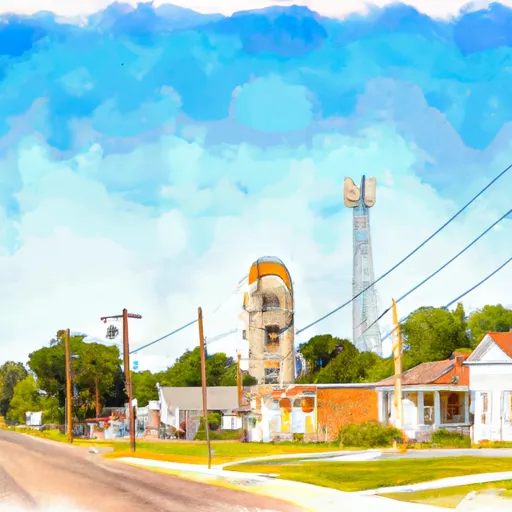-
 Snoflo Premium
Snoflo Premium
Get unlimited access to all our content
With no Ad interruptions! - Start Your Free Trial Login with existing account
Ulysses
Eden Index
Climate
9.3
•
Recreation
0.6
•
Community
•
Safeguard
3.9/10

Ulysses, Nebraska is a small town located in Butler County. The climate in Ulysses is typical of the Midwestern region, characterized by warm summers and cold winters. Average temperatures range from 20°F (-6°C) in winter to 85°F (29°C) in summer, with moderate rainfall throughout the year.
Hydrologically, Ulysses is situated near the Big Blue River, which passes through the nearby city of David City. The river serves as an important water source for the area and supports various aquatic ecosystems. Additionally, there are several smaller creeks and ponds scattered throughout the region, enhancing the natural beauty of the landscape.
Outdoor enthusiasts visiting Ulysses can enjoy a variety of recreational opportunities. The area offers excellent opportunities for fishing, with the Big Blue River being home to a diverse range of fish species. Hunting is also popular, with a number of game species found in the surrounding countryside. Furthermore, Ulysses provides ample opportunities for hiking, camping, and bird-watching, as the region boasts scenic trails and an abundance of wildlife. Whether exploring nature or engaging in outdoor activities, Ulysses provides a welcoming environment for visitors to enjoy the beauty of Nebraska's landscapes.
What is the Eden Index?
The Snoflo Eden Index serves as a comprehensive rating system for regions, evaluating their desirability through a holistic assessment of climate health, outdoor recreation opportunities, and natural disaster risk, acknowledging the profound impact of these factors on livability and well-being.
Climate Health Indicator (CHI): 9.3
Ulysses receives approximately
709mm of rain per year,
with humidity levels near 78%
and air temperatures averaging around
11°C.
Ulysses has a plant hardyness factor of
5, meaning
plants and agriculture in this region thrive during a short period during spring and early summer. Most
plants will die off during the colder winter months.
By considering the ideal temperature range, reliable water supplies, clean air, and stable seasonal rain or snowpacks, the Climate Health Indicator (CHI) underscores the significance of a healthy climate as the foundation for quality living.
A healthy climate is paramount for ensuring a high quality of life and livability in a region, fostering both physical well-being and environmental harmony. This can be characterized by ideal temperatures, reliable access to water supplies, clean air, and consistent seasonal rain or snowpacks.
Weather Forecast
Streamflow Conditions
Big Blue
Area Rivers
Big Blue
Snowpack Depths
Big Blue
Reservoir Storage Capacity
Big Blue
Groundwater Levels
Recreational Opportunity Index (ROI): 0.6
The Recreational Opportunity Index (ROI) recognizes the value of outdoor recreational options, such as parks, hiking trails, camping sites, and fishing spots, while acknowledging that climate plays a pivotal role in ensuring the comfort and consistency of these experiences.
Access to outdoor recreational opportunities, encompassing activities such as parks, hiking, camping, and fishing, is crucial for overall well-being, and the climate plays a pivotal role in enabling and enhancing these experiences, ensuring that individuals can engage in nature-based activities comfortably and consistently.
Camping Areas
| Campground | Campsites | Reservations | Toilets | Showers | Elevation |
|---|---|---|---|---|---|
| Berner Memorial Campground | None | 1,275 ft | |||
| Crystal Springs Lake | 60 | 1,314 ft | |||
| Buckley Creek | 4 | 1,429 ft |
Catastrophe Safeguard Index (CSI):
The Catastrophe Safeguard Index (CSI) recognizes that natural disaster risk, encompassing floods, fires, hurricanes, and tornadoes, can drastically affect safety and the overall appeal of an area.
The level of natural disaster risk in a region significantly affects safety and the overall livability, with climate change amplifying these risks by potentially increasing the frequency and intensity of events like floods, fires, hurricanes, and tornadoes, thereby posing substantial challenges to community resilience and well-being.
Community Resilience Indicator (CRI):
The Community Resilience Indicator (CRI) recognizes that education, healthcare, and socioeconomics are crucial to the well-being of a region. The CRI acknowledges the profound impact of these elements on residents' overall quality of life. By evaluating educational resources, healthcare accessibility, and economic inclusivity, the index captures the essential aspects that contribute to a thriving community, fostering resident satisfaction, equity, and social cohesion.

